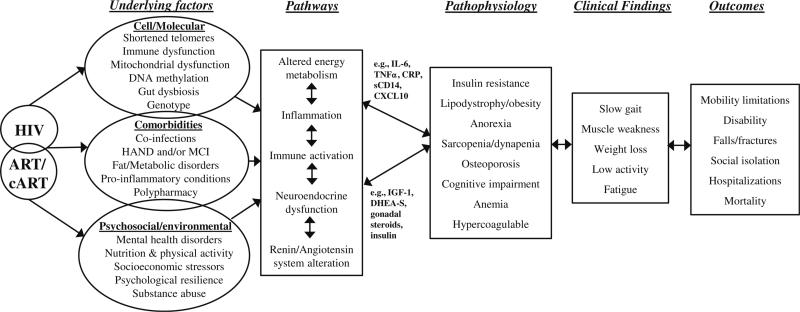Fig. 1.
Potential integrative context around which to consider frailty in HIV-infected adults, adapted from Walston et al. [79]. The proposed pathways are based on existing evidence derived from the general population, HIV-specific frailty literature, and emerging evidence and multidisciplinary ideas about psychosocial and physiological inter-relationships among contributors, confounders, pathogenesis, phenotypes, and recognized outcomes or behaviors in frailty. HAND, HIV-associated neurocognitive disorder. MCI, mild cognitive impairment. IL-6, interleukin-6. TNFα, tumor necrosis factor alpha. CRP, C-reactive protein. CXCL10, C-X-C motif chemokine 10 or interferon gamma-induced protein. IGF-1, insulin-like growth factor-1, DHEA-S, dehydroepiandrosterone sulfate

